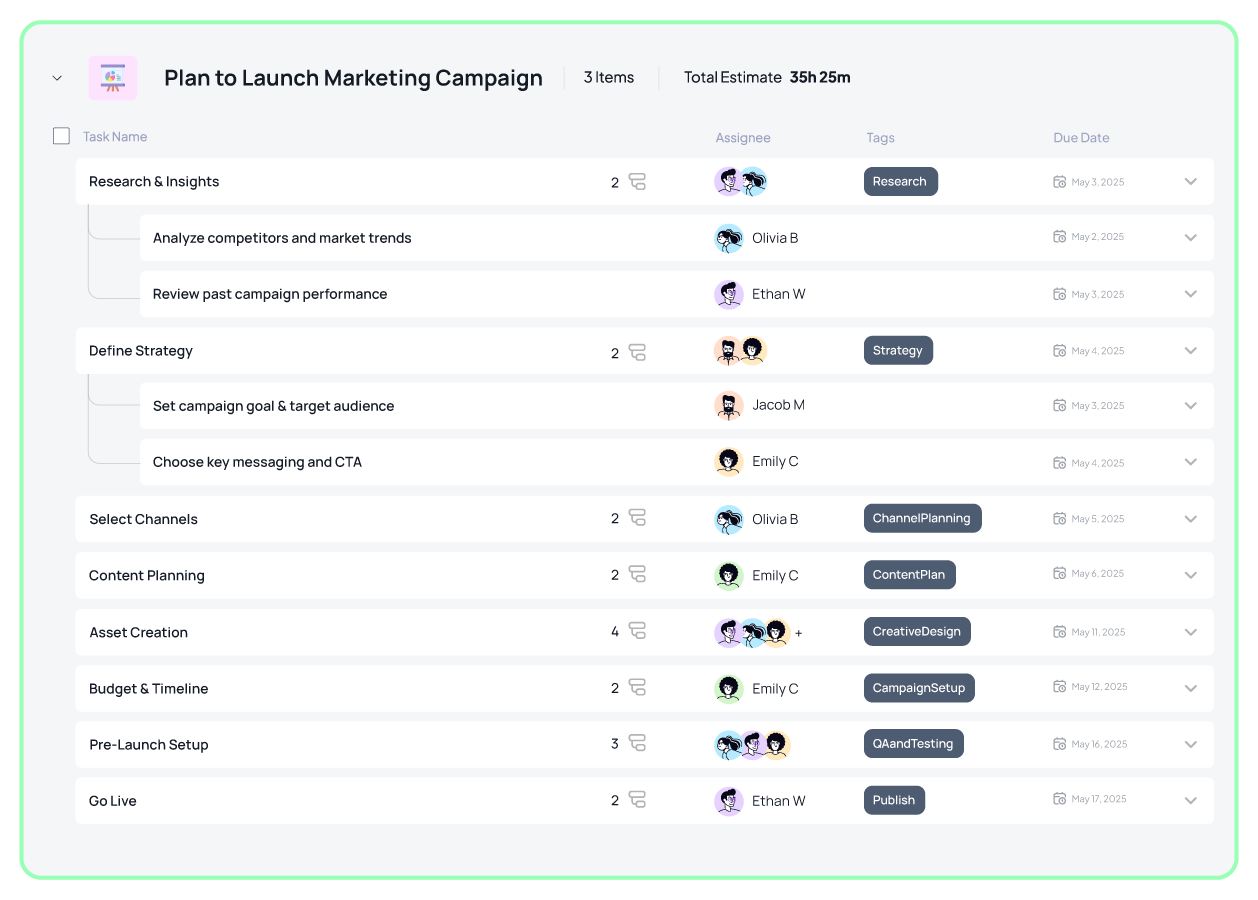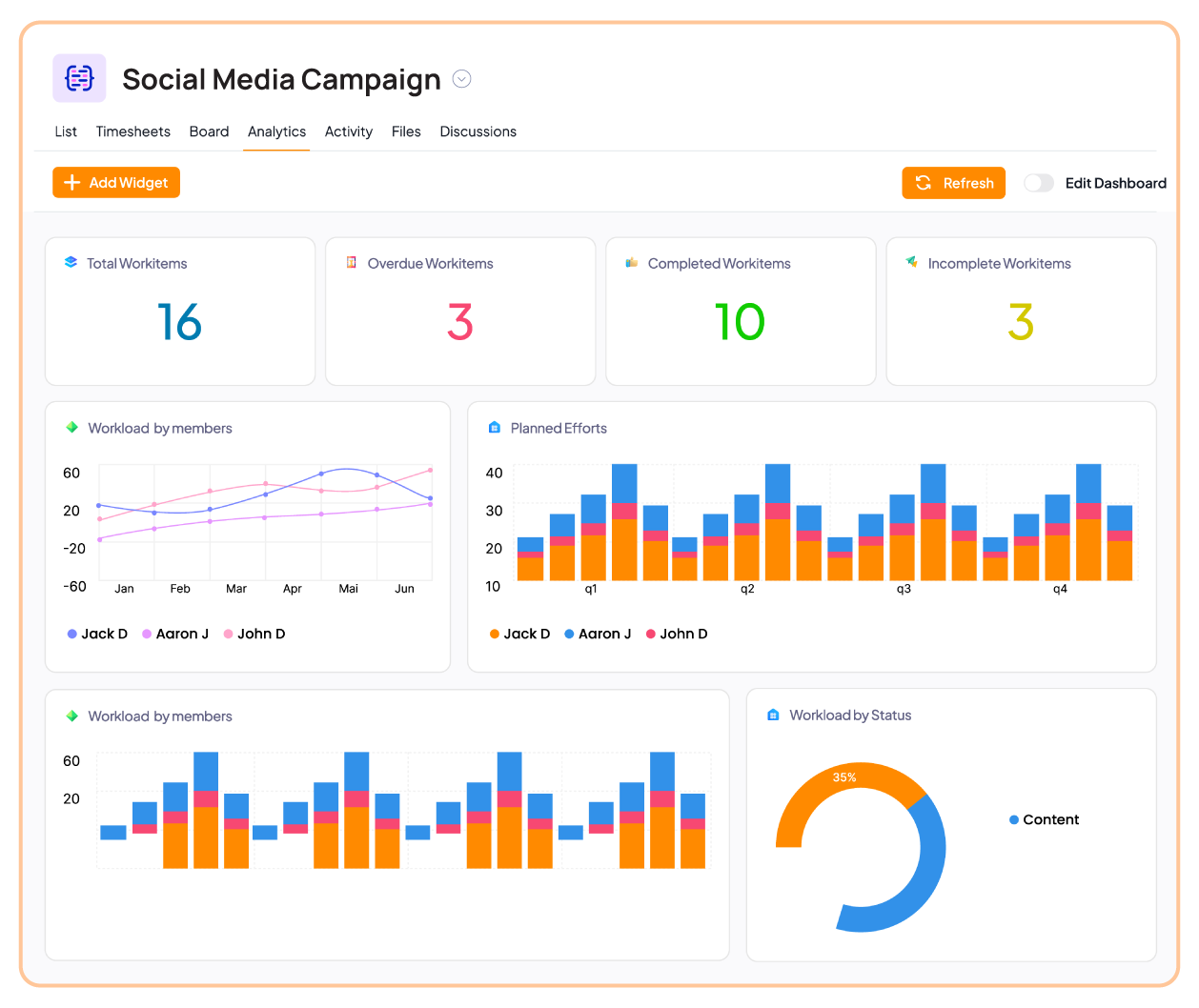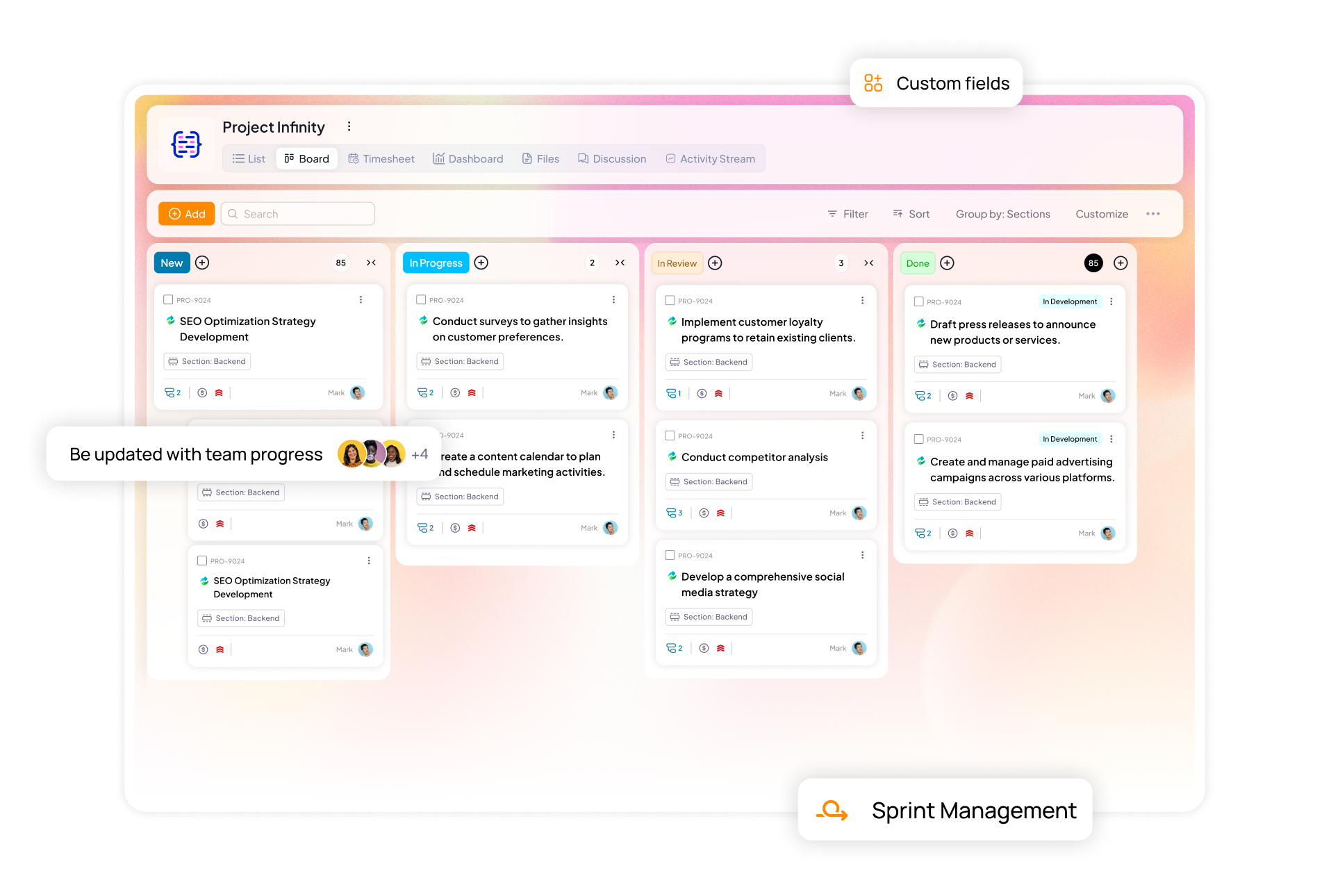Remote working is the new era of marketing leadership.
Marketing teams no longer live under one roof. For many organizations, remote and hybrid work has become the default. According to Forbes, 98% of remote workers want to continue working remotely, at least part-time, for the rest of their careers.
For marketing leaders, this shift means access to global talent and more flexible execution models. But it also introduces the new complexity of managing remote marketing teams that requires fresh thinking around alignment and culture.
In this guide, you’ll learn clear, actionable best practices for how to manage a remote marketing team. If you’re leading a team that works across time zones and tech stacks, this is for you.
Chapter 1: Building a high-performing remote marketing team
Hiring the right people sets the foundation for a high-performing remote marketing team.
Start with people who’ve done focused, asynchronous work before. Look for marketers who communicate clearly, own outcomes, and don’t wait for hand-holding.
During interviews, shift away from hypothetical scenarios. Instead, ask for specific examples of how they’ve managed ambiguity or self-prioritized in past roles.
Just as important is alignment on how your team operates. That includes shared working hours (if any) and decision-making norms. Distributed teams unravel quickly when they don’t share expectations.
Here are some best practices on how to build a remote marketing team and hire the right people:
- Hire for written clarity and task ownership, not charisma
- Prioritize time zone overlap for collaborative roles (e.g., creative + paid media)
- Build cross-functional teams with rotating leads to avoid single-point bottlenecks
- Document internal workflows before scaling
Companies with strong remote onboarding processes see higher employee retention. So, it makes sense to create a digital onboarding system with crystal clear expectations and processes.
In practice, set up introductory meetings, assign a mentor, and have new marketers shadow experienced colleagues on a pilot project. Clear documentation and check-ins in the first 30–90 days lead to better sync and efficiency later.
Chapter 2: Remote marketing team communication strategies for clarity and connection
Remote marketing team communication is the lifeline of high-performance setups. Without casual office chats, you must build deliberate ways to keep everyone aligned and engaged. Here are a few remote marketing team management tips to build better communication channels.
1. Embrace asynchronous collaboration
In a remote setup, you need a communication workflow infrastructure from the get-go. For daily standups, use a shared doc or Slack thread. For project feedback? Drop it in your project management software with comments tied to tasks.
2. Schedule purposeful meetings
While async tools are useful, live video calls remain vital for strategy and team cohesion. Hold a weekly video standup for project updates and a monthly video meeting for big-picture planning.
These check-ins build rapport that text alone can’t. Personal communication is far more effective at building trust than emails. Begin meetings with a quick icebreaker.
For example, start standups by asking each person for a ‘one-word pulse check’ of how they’re feeling. This simple routine gives managers a window into morale and makes people feel more connected. Personal connection is one of the key elements for managing distributed marketing teams.
3. Promote open feedback loops
Encourage a culture where people speak up. Use regular one-on-one video calls to discuss work and career goals. Also consider anonymous channels (like a Google Form or a feedback bot) for honest ideas.
When team members know you value their opinions, misunderstandings fade. Over-communicate on expectations and always clarify deadlines and context. These transparent remote marketing team communication strategies prevent confusion and show respect for everyone’s time.
When your team knows where to look and how to respond, they waste less time chasing updates and spend more time creating.
Chapter 3: Tech stack for remote marketing success
The right technology stack makes remote marketing possible. Choose a lean, integrated stack that balances collaboration and visibility. Your tools should reduce the time spent chasing updates instead of creating more admin hiccups.
Here are some of the best tools for remote marketing teams tech stack.
1. Project management

Use platforms like 5day.io for task tracking and scheduling. While many project tools focus on surface-level task lists, 5day.io gives you real-time visibility into team capacity, so you can assign work with intention.
For example, marketing leaders can view a timeline of upcoming deadlines across content and design teams.
Unlike static tools that leave you reacting to missed dates, the right project management tool allows you to forecast execution risks and resolve bottlenecks early. You get operational clarity without the spreadsheet scramble.
2. Communication
Slack (or Microsoft Teams) and Zoom are essential. Slack channels replace hallways as you can set up one for each project or topic.
Zoom is your face-to-face standup space. For creative brainstorming, a digital whiteboard like Microsoft Whiteboard lets everyone sketch and annotate visuals together. Integrating these tools keeps work flowing and reduces tool-switching fatigue.
3. Marketing automation and analytics
Platforms like HubSpot simplify email campaigns, social posts, and lead nurturing for your marketing team. It allows your team to focus on strategy instead of manual tasks.
For deeper insights, consider advanced analytics. Such tools let you reallocate budget on the fly by instantly showing which ads or blog posts truly drove results. In short, equip your team with both automation (to free up time) and data dashboards (to guide decisions).
4. Security
Don’t forget security as you scale. Require all team members to use VPNs when accessing company data. For instance, NordVPN is a top choice for remote work. It offers fast, encrypted connections worldwide and strong privacy features.
Also, use multi-factor authentication on all critical accounts (email, project tools, CMS) to guard against cyber breaches. Strong security gives everyone peace of mind and keeps client information safe.
Apart from the above tools, treat your project management platform as a source of truth. Every brief, deadline, creatives, and approval should live there. Remote marketing team communication suffers most when teams scatter context across too many apps.
Chapter 4: Setting goals and measuring success
In a remote world, measure outcomes (not hours) and keep performance visible. High-performing teams define clear project management KPIs, tie them to larger business goals, and measure progress consistently. That clarity removes ambiguity and eliminates micromanagement.
Here’s how you can track metrics for remote marketing team performance.
1. Set clear, outcome-based KPIs
Define concrete goals like “increase organic traffic by 15%” or “generate 200 MQLs this quarter,” rather than vague tasks. Many marketing platforms offer a planning feature that allows managers to outline detailed objectives and attach them to each campaign for total alignment.
What to track:
- Output metrics (campaigns launched, assets delivered)
- Performance metrics (MQLs, conversion rates, return on ad spend, ROMI)
- Process metrics (on-time delivery, review cycle speed)
Teams with well-defined metrics work more efficiently. At each project kickoff meeting, agree on the numbers that count so everyone aims for the same targets.
2. Use real-time dashboards

Give the team instant visibility into how projects are progressing. For example, project management software like 5day.io offers live dashboard widgets. It allows you to track work item statuses and sprint progress.
With this, you can spot delays or bottlenecks like overdue tasks before they hinder your project progress.
For performance level insights, use a platform like Google Data Studio. It comes with reporting features to show campaign performance at a glance. With real-time updates, you can quickly spot low-performing content or lagging channels and pivot.
For instance, a B2B SaaS team can track cross-channel engagement and identify an underperforming email series mid-campaign. Using your project management software, track who has the bandwidth to work on the pivot and execute it fast. As a result, they improve messaging on the fly and increase their ROI. Data-driven agility is key for building remote marketing teams.
3. Recognize and celebrate wins
Without a physical office, you need to make recognization intentional. Share successes in the team’s weekly meetings or highlight them in a weekly newsletter.
Public recognition motivates your team. When someone hits a lead target or launches a successful campaign, it’s powerful when the manager gives them a shout out by name.
For better impact, always connect the achievement to the broader team goal. For example, a manager can show praise and say Dana improved their SEO, which increased organic leads by 20% and helped the team hit their quarterly growth target.
This kind of recognition builds morale and reinforces that every contribution counts, even from afar.
Chapter 5: Solving common challenges of managing a remote marketing team
Remote teams face multiple obstacles, but proactive solutions turn these into strengths. Here are some common challenges of managing a remote marketing team:
1. Time zone coordination
Schedules can clash across regions. Handle this by relying on asynchronous work wherever possible. Record key meetings and allow flexible hours so no one is constantly on odd shifts.
Use scheduling tools (like the user-specific work schedule features in 5day.io or Google Calendar) to find overlapping windows.
Establish ‘core hours’ when all team members (globally) have an hour to meet synchronously each day. That way, team members can attend at least one live meeting. Over time, this clear structure helps raise remote team productivity.
2. The team isolation
People can feel lonely without coworkers nearby. To address this, build a connection by making some virtual social time. For example, host a monthly lunch & learn connects, where a team member presents an industry topic, or schedule informal virtual coffee breaks.
Keep communications plan light as well as work focused. Encourage sharing photos of hobbies, pets, or weekend highlights in a casual channel. Personal connections spark the goodwill that keeps collaboration smooth.
3. Brand consistency
Remote work can cause your messaging to drift. Create a shared style guide and branding templates accessible to everyone to reduce siloes. Tools like Canva and Figma help your team use the same colors, fonts, messaging, and layout across all visuals.
Run regular brand checks in campaigns. Ask your brand manager or CMO to review a sample of blogs, ads, flyers, and social posts each month.
Look for messaging, logo use, layout, and design consistency. This approach keeps your brand clear and unified, no matter where your team creates the content.
4. Burnout and balance
Blurring the lines between home and work often leads to overwork. Encourage a strict ‘shut-off’ time. Make sure team members declare their work hours and do not expect replies after hours.
Lead by example. It means managers should not email at midnight or on weekends. A 2023 Buffer survey found 22% of remote workers struggled to unplug. Counteract this by promoting downtime.
For instance, offer subscriptions to meditation apps or virtual fitness classes. Encourage your teams to go on vacation. Often remind your team members that sustainable performance beats late-night sprints.
Chapter 6: Scaling and evolving your remote marketing team
Remote work is here to stay, so build with the long term in mind. Successful remote teams know how to be flexible and when to adapt. Here are a few ways leaders can champion remote team management.
1. Hire globally
Take full advantage of borderless hiring. Expand your search beyond local talent and focus on skills and perspective.
Build a diverse team. For example, hire a video creator in Asia, an SEO specialist in Europe, and a copywriter in Latin America. Use the right project management tool to help them collaborate across time zones and bring fresh insights to every campaign.
2. Invest in ongoing learning
Because digital marketing changes quickly, give access to your team to online courses and certifications. Platforms like LinkedIn Learning or Coursera offer training courses on SEO, analytics, writing, and AI tools.
Schedule ‘learning hours’ so team members can explore new skills or tools on company time. Rotate knowledge in check-ins. Ask one person to demo a new tool or platform each month. This approach keeps your team sharp and ready for what’s next.
3. Embrace AI and automation
AI is no longer a buzzword these days. Instead, it will become a part of the modern MarTech stack. Use AI features in your stack to automate repetitive tasks.
For example, use a tool that auto-generates campaign briefs or social captions from bullet points. Implement marketing analytics that use machine learning to recommend budget shifts or content topics.
Let AI handle the routine work like scheduling posts and summarizing drafts, so your team can focus on strategy and execution.
How 5day.io helps manage remote marketing teams
Managing and leading remote marketing teams takes more than digital tools. It needs an intentional strategy and clear systems that support how distributed teams work. When you hire with intention and build repeatable processes, your team can outperform any in-house setup.
This is where 5day.io helps manage a remote marketing team with confidence. This all-in-one project management software gives you the structure and insights to make it happen.
Here’s how it supports effective remote marketing team management:
- io offers real-time visibility into tasks so you can assign work with intention and prevent bottlenecks before they happen
- Plan, assign, and track marketing sprints with dependencies
- Use list or board views to track content or design workflows
- Use multiple logging formats, like manual or bulk, and approve time entries with built-in reminders
- Share files, tag teammates, and manage comments within the platform so every asset and update stays connected to its work item
- Get a clear picture of campaign health with visual widgets
- Monitor progress, time spent, and status by work item or project with zero spreadsheet chaos
- Each user sets their own timezone, so schedules, deadlines, and reminders always sync
No matter whether you’re working with contractors or cross-functional internal teams, 5day.io helps marketing teams scale with your structure. Try 5day.io free for 30 days – no credit card needed.






